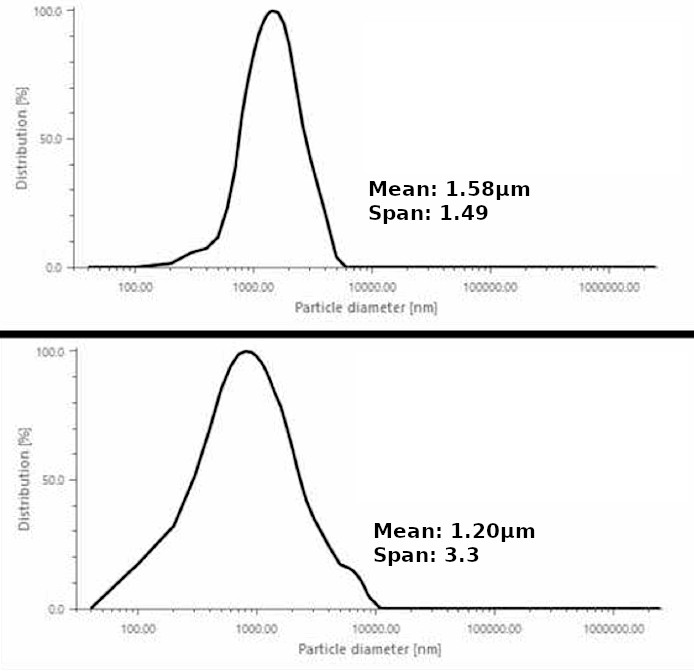What Does "Span" of Particle Size Mean?
In a particle size analysis report, in addition to the typical D10, D50, and D90, there is a value called "Span". It is calculated by the formula (Dv0.9-Dv0.1) / Dv0.5.

Formula for Particle Size Distribution
Taking the example in the article "How To Read The Report of Particle Size Analysis?", the span is evaluated (46.88-2.557 ) / 17.11 = 2.590. If the span is closer to 0, it means that the granularity is more uniform and the size consistency is better. There is no certain principle for the size of the Span. It depends on the characteristics of the sample. Some samples have a significantly larger Span. For the specific standards, the span is relatively small, because of the high particle size consistency by the design.

下方樣品的跨度較大,粒徑分佈範圍比較廣
Sometimes, when you measured a sample, the Span is very different from the previous one. Then, you may have to examine it with a microscope and observe the reason, perhaps the composition of the sample is different this time, or the quality is already changed. "Bevision M1 Automatic Image Scanning Particle Size Analyzer", is a good tool to do this job. It is designed based on an microscope, and using AI (artificial intelligence) to quickly determine the particle size in the FOV (Field of View), and the microscope image can be used to verify the particle size distribution.
In addition to Span, there is another value in the report, called "Peak Size", which is used to describe the particle size with the largest volume. That is, in the particle size distribution curve, the highest point with the point at the X axis,. "Peak Size" is sometimes called "Mode" in some brands of Particle Size Analyzer.


